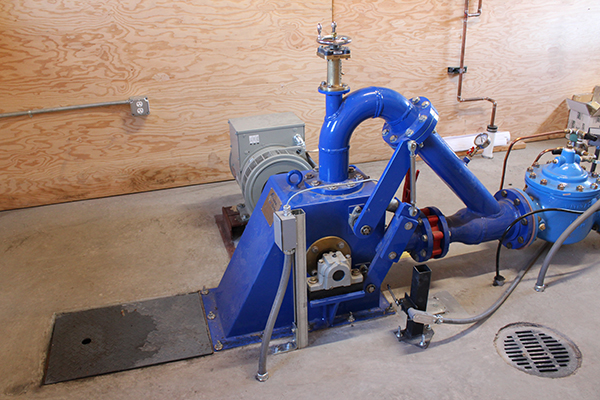Lamar Buffalo Ranch

46.4°F
33%
8.9mph
716.3W/m2
Deprecated: Creation of dynamic property EnergyComparison::$title is deprecated in /export/home/oupublish5/public_html/idl/lbr/includes/energy_comparisons.php on line 310
Deprecated: Creation of dynamic property EnergyComparison::$consumption_rate is deprecated in /export/home/oupublish5/public_html/idl/lbr/includes/energy_comparisons.php on line 311
Deprecated: Creation of dynamic property EnergyComparison::$image_url is deprecated in /export/home/oupublish5/public_html/idl/lbr/includes/energy_comparisons.php on line 312
Deprecated: Creation of dynamic property EnergyComparison::$title is deprecated in /export/home/oupublish5/public_html/idl/lbr/includes/energy_comparisons.php on line 310
Deprecated: Creation of dynamic property EnergyComparison::$consumption_rate is deprecated in /export/home/oupublish5/public_html/idl/lbr/includes/energy_comparisons.php on line 311
Deprecated: Creation of dynamic property EnergyComparison::$image_url is deprecated in /export/home/oupublish5/public_html/idl/lbr/includes/energy_comparisons.php on line 312
Deprecated: Creation of dynamic property EnergyComparison::$title is deprecated in /export/home/oupublish5/public_html/idl/lbr/includes/energy_comparisons.php on line 310
Deprecated: Creation of dynamic property EnergyComparison::$consumption_rate is deprecated in /export/home/oupublish5/public_html/idl/lbr/includes/energy_comparisons.php on line 311
Deprecated: Creation of dynamic property EnergyComparison::$image_url is deprecated in /export/home/oupublish5/public_html/idl/lbr/includes/energy_comparisons.php on line 312
Deprecated: Creation of dynamic property EnergyComparison::$title is deprecated in /export/home/oupublish5/public_html/idl/lbr/includes/energy_comparisons.php on line 310
Deprecated: Creation of dynamic property EnergyComparison::$consumption_rate is deprecated in /export/home/oupublish5/public_html/idl/lbr/includes/energy_comparisons.php on line 311
Deprecated: Creation of dynamic property EnergyComparison::$image_url is deprecated in /export/home/oupublish5/public_html/idl/lbr/includes/energy_comparisons.php on line 312
Deprecated: Creation of dynamic property EnergyComparison::$title is deprecated in /export/home/oupublish5/public_html/idl/lbr/includes/energy_comparisons.php on line 310
Deprecated: Creation of dynamic property EnergyComparison::$consumption_rate is deprecated in /export/home/oupublish5/public_html/idl/lbr/includes/energy_comparisons.php on line 311
Deprecated: Creation of dynamic property EnergyComparison::$image_url is deprecated in /export/home/oupublish5/public_html/idl/lbr/includes/energy_comparisons.php on line 312
Deprecated: Creation of dynamic property EnergyComparison::$title is deprecated in /export/home/oupublish5/public_html/idl/lbr/includes/energy_comparisons.php on line 310
Deprecated: Creation of dynamic property EnergyComparison::$consumption_rate is deprecated in /export/home/oupublish5/public_html/idl/lbr/includes/energy_comparisons.php on line 311
Deprecated: Creation of dynamic property EnergyComparison::$image_url is deprecated in /export/home/oupublish5/public_html/idl/lbr/includes/energy_comparisons.php on line 312
Deprecated: Creation of dynamic property EnergyComparisonLaundry::$title is deprecated in /export/home/oupublish5/public_html/idl/lbr/includes/energy_comparisons.php on line 310
Deprecated: Creation of dynamic property EnergyComparisonLaundry::$consumption_rate is deprecated in /export/home/oupublish5/public_html/idl/lbr/includes/energy_comparisons.php on line 311
Deprecated: Creation of dynamic property EnergyComparisonLaundry::$image_url is deprecated in /export/home/oupublish5/public_html/idl/lbr/includes/energy_comparisons.php on line 312
Hydro

The microhydro system is the newest renewable energy project at Lamar Buffalo Ranch, drawing water from the nearby Rose Creek. The water is collected from an underground spring about a half mile from the camp and drains downhill into the pump and turbine system. After the water flows through the system it is directed back into Rose Creek and eventually to the Lamar River. No water is wasted or polluted in this process. Before a microhydro system could be installed an extensive survey had to be conducted to show that the stream provides sufficient flow and head and that there would be minimal impact on the surrounding landscape.
How it Works
Microhydro systems are small (less than 100 kW) energy systems that use the same technology and concepts as a large-scale hydroelectric power plant. Microhydro systems differ not just by their size but their lessened environmental impact. Even though large hydroelectric power plants do not directly emit air pollutants, dams obstruct fish migration, change natural water temperatures, water chemistry, river flow characteristics, and silt loads. All of these have negative impacts on both the local ecosystem and ecosystems further down the stream. Microhydro systems do not require dams or impoundments and are “run of the river” meaning only a fraction of the water is diverted and returned to the stream. Yellowstone National Park is home to the only undammed river in the lower 48 states – the Yellowstone River – and we are proud to keep that resource clear and highlight alternative methods of hydro-power.
Microhydro systems count on the head and flow of the river to drive the turbine to produce electricity. Head is the elevation difference between the source of water and turbine. Flow is the volumetric measure of moving water. The greater the head and flow, the higher the energy output. The Lamar system has moderate head and flow, although the flow changes throughout the year with annual snow melt. This is why the Lamar system collects water from an uphill stream. The vertical drop builds potential energy to drive the turbine. Every microhydro system, including the Lamar Ranch system, consists of the same basic elements: pipes to deliver water, a turbine or waterwheel to harness kinetic energy, a generator to transform kinetic energy to electricity, a regulator to control the generator, and wiring to deliver electricity.
The Lamar Ranch system collects water from an underground spring uphill from the ranch. The spring being uphill allows the water to flow passively downhill, building energy as it travels through a series of smaller and smaller pipes before reaching the turbine. The turbine is essentially where the magic happens – and by magic we mean energy conversion. As the water travels to the turbine it contains kinetic energy. The water is shot through a nozzle at the wheel of the turbine causing it to rotate; this converts the kinetic energy to rotational energy. The turbine, connected through a rotating shaft, spins a generator and produces electricity.

Light a bulb for

Run an electric heater for

Enjoy hot shower for
